"I was born far away from home", Stanislava Kovalcikova in conversation with Nick Koenigsknecht
"I think with good paintings you kind of become aware and you stop seeing the image and you just start feeling the presence." — Stanislava Kovalcikova
Header image: Misty, 2015

Nick Koenigsknecht
I'm actually looking at a painting of yours right now from your show at Open Forum Never Afraid After Dark, (2014-2020), and it's a painting that I don't understand at all from a logical perspective. It may be that I'm a little afraid to understand it because there's a darkness to it that I'm nervous about knowing. This lack of understanding and letting go of logic is also an important element of talking about religion or faith or mysticism and allowing ourselves the freedom to not understand. I wonder when you're painting how these images get built up. Does it start with a sketch or is it something that's more of an organic transmutation of a feeling? Does the painting in the end look the way you intended, or do you let go of intentionality?
Stanislava Kovalcikova
I operate rather from premeditated intentions, than concrete steps. This has to do with the fact that I operate in images not in ideas or concepts. That's the reason why I believe faces and bodies are more substantial than the storyline of the painting. If I imagine a successful painting, there’s something very alive about it, you know? There has to be something extremely vivid about the expression of the creatures I depict. In my painting, the protagonists often go through identity and relationship conflicts. But in a broader sense, I think I'm dealing with a depiction of dependency and personal maturity and social entanglements. I wasn’t working with live models or photography until recently, so the things I depict are pulled directly from my experience.
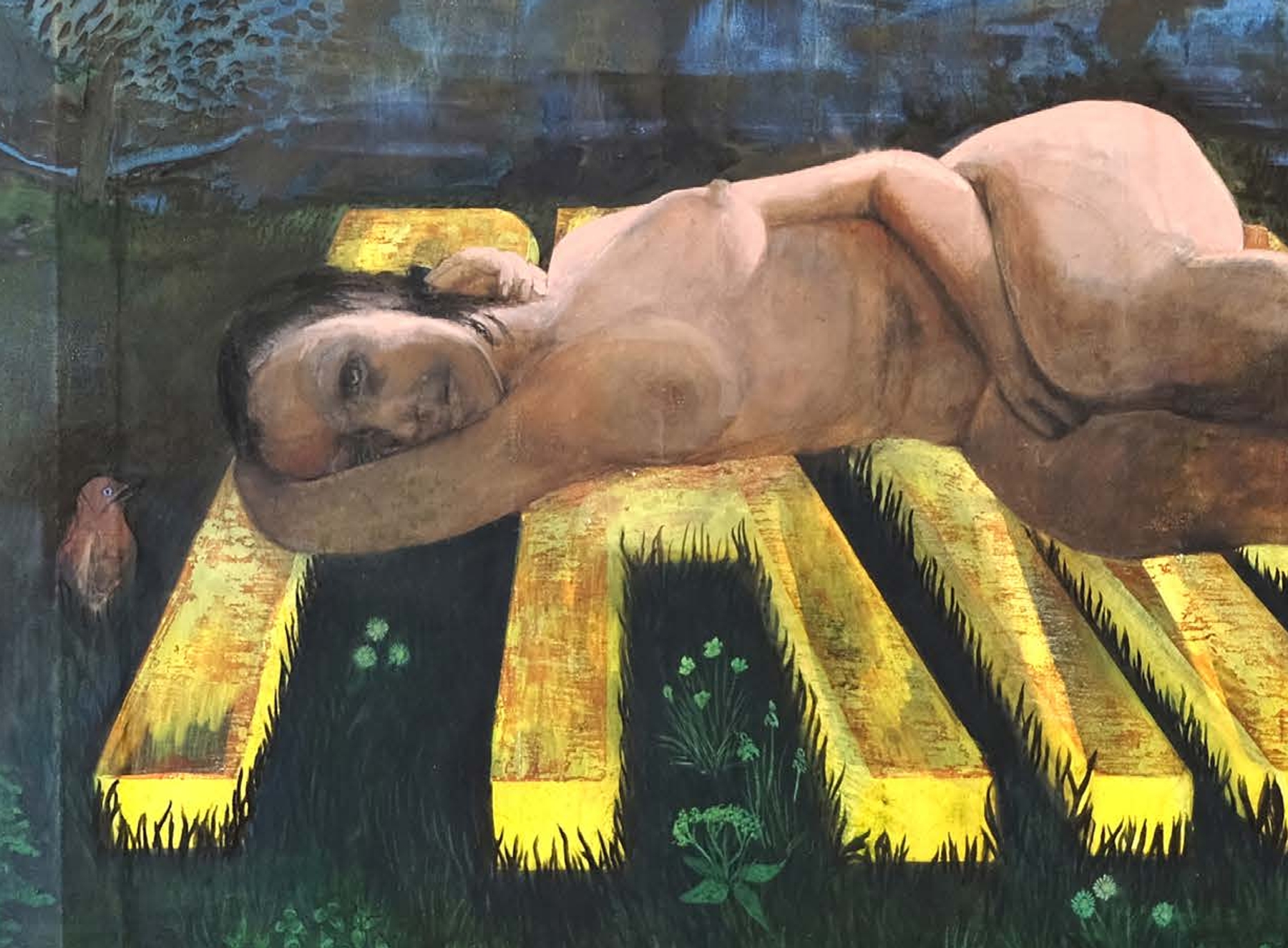
When I first saw your work, I experienced it online like a lot of us are experiencing art right now, through my friend Stephan Tanbin Sastrawidjaja’s Instagram. He posted two paintings: Double Venus (2019), and Double Mars (2019). So many different things struck me about these paintings. There was a certain sense of patina on the paintings that I couldn't really wrap my mind around. I felt like I was looking at an icon that had been touched by a thousand pilgrims, like it had been in some holy place and that the image emerged through layers of incense smoke and oils from reliquary rituals. They appeared heavily layered with time and age. Could you talk about the archive of work that you've been working on for a number of years and how your process often involves using time as a medium?
That’s true. It’s difficult to put it in a few sentences, but I’ll try. I think the viewer may perceive them as ‘sacred’ because the realm of my paintings operates around an imaginary that includes themes that are tied very closely to private identity: sexuality, gender, race, social hierarchy – things that are often complicated to talk about. Normally, I work on a painting anywhere between two and five years. I suppose that my search for the image does materialize on canvas in the form of smudges and disintegrated surfaces, resurfaced underpainting and granular attention to detail. I am an emotional painter, and the emotions I experience I share with the spectator. Therefore I think it's helpful to consider how you feel about my paintings rather than what you think of them.
I have annals of unfinished work that I have been building up over the last ten years. I call it my ‘forest’ of paintings.
Every year I start some new works and finish ones from the previous years. It's a bio-dynamic process, I would say. I don’t have to ‘think’ too much, working in the studio feels very natural. I like that eerie feeling of being overwhelmed by work that feels independent of and larger than me as a decision maker. It's almost as if I turn into an animal when I paint. I am particularly drawn to the chaotic atmosphere when a painting begins because I feel that it is a reflection of the chaos inside me. The process of finishing works is often more complicated because I have to erase steps which were not necessary. For outsiders, it seems like I am endlessly meditating because I spend days and weeks just looking at the works. In preparation of a show, I select works that complete each other and aid me to finish them. Then, I rotate within a selected group of paintings for months and sometimes years. I am absolutely obsessed with them and feel I need to spend every day in the studio.


This chaos inside of you, where does that come from?
I was born far away from home. My mother comes from the island Sakhalin, on the Russian Pacific coast, north of Japan, and my father is from a tiny city in eastern Slovakia. I think already to my parents and my siblings, I was a stranger. This pattern has repeated in my personal life. I grew up in various European countries, therefore, I look at western painting through an unconventional cultural lens. I don't feel like I am apt to be part of anestablished visual language. On the other hand, I believe that the best painters never consciously decide to do something new, so in a sense I am trying to navigate a way out of that labyrinth.
You grew up moving around a lot, is there a place in the world where you feel at home? Is there a link between this transience and queerness… finding belonging in a communityof others who don’t belong?
No, I've never belonged anywhere, and I've always known that would remain throughout my life: trying and failing. I am a stranger and I always will be, and in the end I don't really care. So for example, me being an immigrant, there is a “transness” aspect to my identity, being trans-national… If you think of “Western” and “Eastern” women, they are socially and culturally coded in very different ways within Germany, with very distinct images. My teenage boyfriend decided to call me “Sta”, which now most people know me as. But my name is Stanislava. A long, complicated but poetic name. So in a way, I also changed my identity.
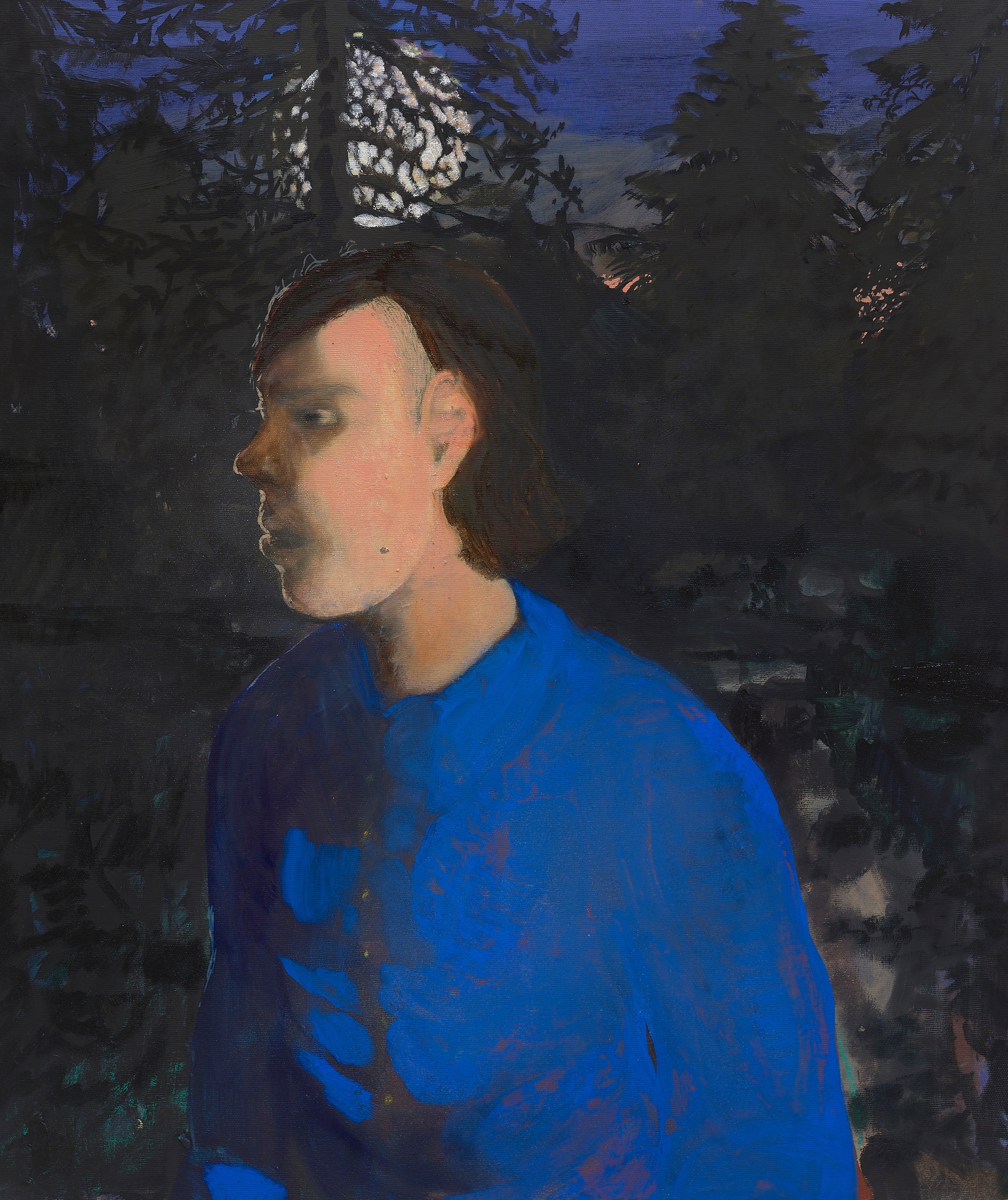
When you're talking about having an image history to lean on, maybe there is a search for, or longing for images to lean on from a past that might be a little bit convoluted.
Yeah, my language is an amalgamation. I feel that going to art school gave me a broader sense of what the discussions really are. Visits to museums and churches are also very important points of connection for me. As a painter you have to find and persist in a vision despite the struggles of your everyday life. In the end, I think there's no clear way to be a painter. Luckily, you don't have to understand a painting in order to like it.
A lot of contemporary work is very connected to current events or very culturally specific, relevant things happening at this moment. Your work, to me, feels the opposite. When you're working on these characters or these images, where are these people? What world do they inhabit?
I'm mesmerized by otherness. My paintings are often populated by strange people from urban societies. By strange, I mean really strong or fragile or bored or sedated or coy people. Sometimes they play weird games or take part in initiation rituals. Frequently, there is also a sense of duality in what they're involved with.
I think standing with otherness is an antidote to art that depicts everyday life in a manageable manner. My subject's identity is crucially not yours – I am reliving a life of trials before your eyes, vibrating like a tuning fork.
Yeah, I think that’s interesting too, because we are talking a lot right now about otherness – about identity in the sense of a relation to different types of descriptives, which could be gender or sexuality descriptives. There are people who, irrespective of how they present in the world as masculine or feminine, which pronouns they use, are queer in that they do not subscribe to notions of permanence within these roles and there are others who cling to a permanence in descriptives. And so, I feel as though this has led to a polarized social binary of people who embrace this uncertainty, this fluidity, this temporality, versus those who have decided that it’s not for them and that things need to be clear, strict and permanent. In your paintings, is everybody queer? Do they live in a queer utopia or is this tension between, let's call it queer and normative, something that is at play in your work?
I would say they live in queer vertigo, not utopia or dystopia. Utopia, in its translation, means ‘no place’. I am more interested in the conflict that this state bears within itself. This motivates me to do a lot of painting. I mean, gender norms are the ways that people identify with gender, but at the same time they are also cultural norms, which I wish to attack.
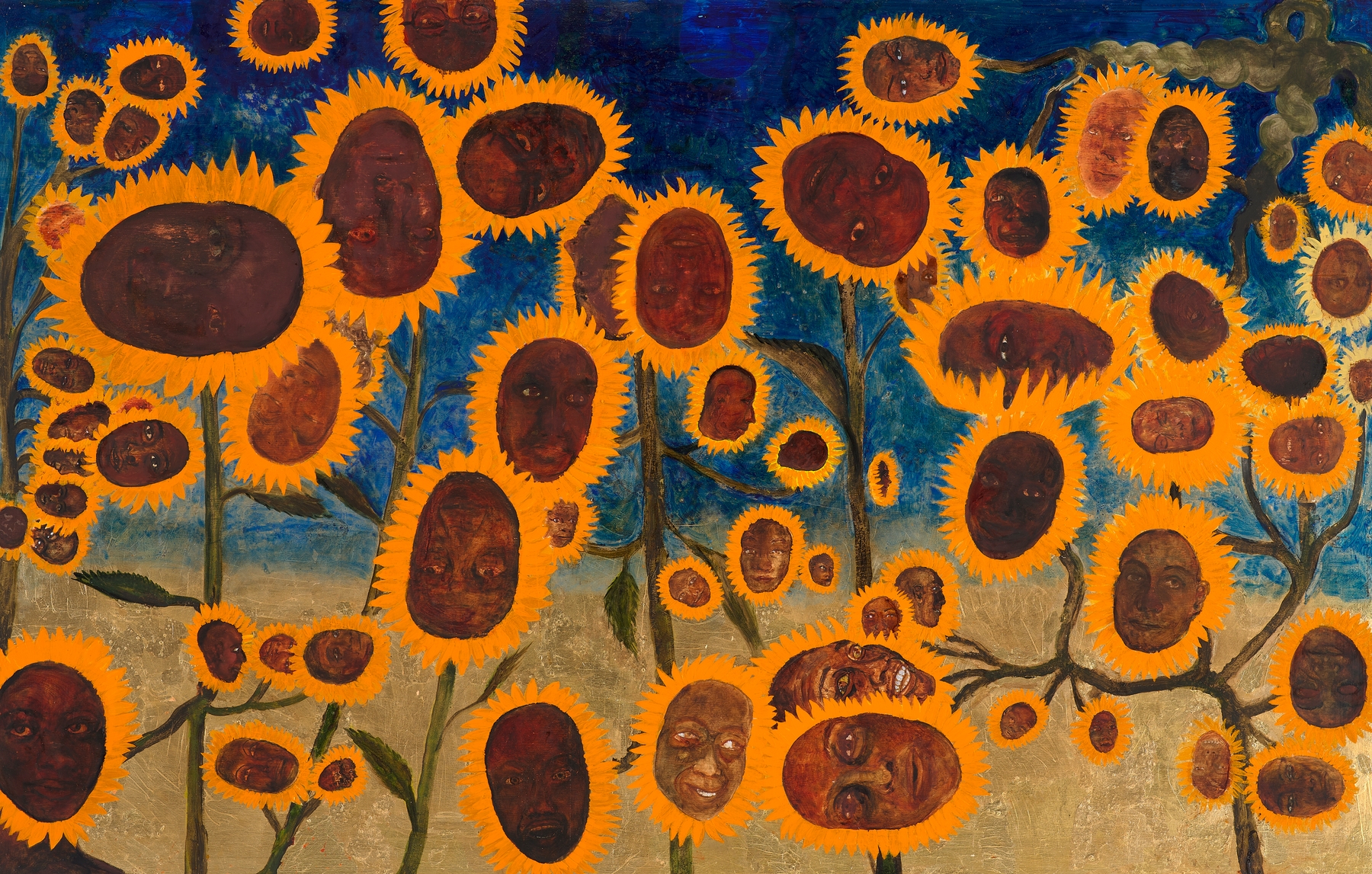
Maybe we can also shift gears a bit and talk about exhibition making. You and I have worked on a solo exhibition at Open Forum, a group exhibition, and now we're working towards a solo exhibition at a museum here in Europe as well as a solo exhibition at Peres Projects. You have spoken about images versus narration, and how you're more interested in faces and less interested in a story that they're trying to tell. I think of exhibition making as a narrative process. Often, when working on an exhibition, I feel that it is my job to help put together these threads that link the work, to create a language to narrate certain topics or themes. I'm curious when you're thinking about putting a group of paintings together, what goes through your mind?
In a good show, you enter, recognize, and recall because it feels so potent and familiar, like a dejà vu. For example, at Open Forum in Berlin, I named my show Eastern Promises. For five years, I worked in a club from 11pm until 9am on weekends as a bouncer. My favorite part of club life was the sun appearing in the East, after a long and sweaty night. This shared feeling of experiencing clubbing before your thirties, inflating and collapsing, in the aftermath of western juvenileness, inspired the work in this show. In the works, I was circling around questions of how to live with the promise of a sunrise when you are already born into the security of a western world. How numbing it might turn out when we minimize the risk of being subject to natural whims. When all the darkness and night would pass and the dancers could finally relax, like after a sad spectacle, the sunlight would fill the room.This show was dealing with solitude. What interested me in that show was depicting a group of people who faced these similar inexplicable experiences.
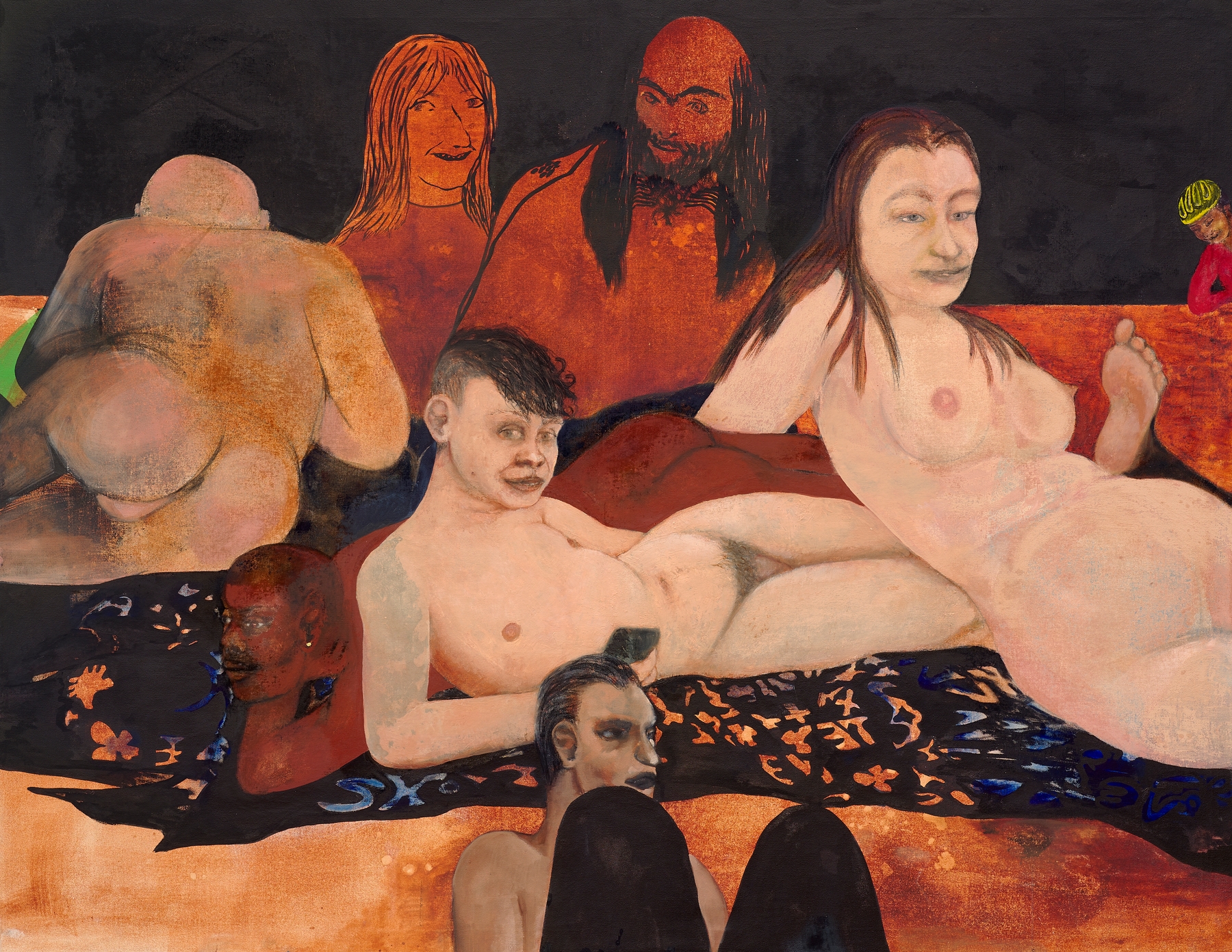
Yeah, there's a painting in that show that is a horizontal format painting: Afterhour (2015 – 2020), and it has this group of people including a boy in the front leaning on his elbow... living in Berlin for a long time I've been to my fair share of clubs and he reminds me of this younger than Jesus phenomenon of young people living really hard and then burning out. I'm curious, what drew you to being a bouncer versus just being a partygoer and what was the job like?
My job as a bouncer taught me a lot about art. I was working at a nightclub called Salon des Amateurs, it's located in the Kunstverein building, which was very popular with artists, musicians, model scouts, collectors, curators, DJs etc. One of the funniest things that I realized working there was that art students could learn more in clubs than in art school, because of the direct social interaction. But then being a bouncer made me an outside agent. I had to always remain conscious that this is a group of people partying and I had to remain cautious... How can I keep it safe and how should I mix the crowd?
Will this be a good party? I fixated on this for some years, and that focus translates into my paintings.

It is similar to composing a good painting?
Certainly. You observe the faces and body language of partygoers and learn to read them, but in the end, much remains a mystery. Working as a night worker was also a pragmatic decision, because it allowed me to be an artist during the daytime and then work nights, then go back to the studio in the morning. Art has its own rules – and one of them is that you must pay more attention to it than anything else in the world if you are going to be true to yourself. And if you don’t do it—and you are an artist—it punishes you. It’s true!
The bouncer job is a very ambiguous position and it's interesting because as a painter, I imagine it could be a similar experience – transmitting something from within to an outside audience. The painting is a membrane, like the door to a club. Once inside, there’s also a lot of grotesqueness that we experience. I'm thinking of those famous paparazzi photos of celebrities entering the club and then leaving the club, and seeing this transformation or breakdown that happens inside of this place.
I love the vital, smelly, dirty atmosphere of clubs. I love the opulence. For me, it seems like our natural state... or rather of human sociality. So, that kind of makes sense to me.
Never Afraid After Dark is actually based on a Titian work which I saw as a child called The Flaying of Marsyas, in a collection in the Czech Republic. Looking at Never Afraid After Dark, my mentor Peter Doig, asked me if I knew the painting. It was strange because he could sense that I saw the work without talking about it. I took the idea for the positioning of the body in my painting from this very classical work. And I think the reason why I found it so interesting was that I felt that Titian had made such an obscure painting. There's a really weird element in this classical composition – the male torso hanging upside down. Yet often I think you experience the body as a kind of burden, hanging. There is something very heavy about how I think about bodies that I like. For example, the two paintings you were referring to in the beginning – the two females and two males, these paintings were based on very body attraction of homosexual couples toward each other. It would be imprecise to express that through a face because I am talking about a physical attraction. So it's another force field for my paintings – the choreography of the bodies. The female and feminine body is something that is compelling to investigate, because it has been a carrier for aesthetic taste for centuries. I find that point really igniting - the reading between classical art carrier and a source of empowerment for modern women.

Is there a sense of needing or wanting to – speaking obviously from a male historic point of view, is there a desire to give a feminine voice to a depiction of something that has been co-opted by men for so long? Or is it not really about that for you?
I have been carrying on a dialogue between painting and the female body ever since I started studying. I think being pregnant at the beginning of my studies was one of the best experiences for me as an artist. It feels exciting to be a painter these days because it's becoming so obvious how our work creates the external world. I am not talking about all paintings, only the ones that still arouse indignation or the desire to laugh... And this makes me realize how vital painting actually is, despite looking very antiquated compared to the digital image. Right now,
I feel really content to be part of painting because there's so much empowerment coming to the surface for people who haven't been represented in the narration of its history. Life looks very much worth living through these painters… these moments don't come very often.
It's interesting because, when technology did not exist to reproduce images mechanically, no one questioned why painting existed. And I think now that we live in an age where not only is mechanical reproduction possible, it's ubiquitous, yet the essentiality of painting has become more and more clear. I think that it's a very specific role in society to be the person who makes the mark on the canvas, and it's a role that has been historically only allowed to a very, very small group of people. It seems like what you're speaking to is the fact that now that's opening up more and more and because of that, becomes a very important part of society and our way of understanding these voices that have been silenced for so long.
We can produce and reproduce images mechanically, but to make an image, it takes a very different approach to reach conception. When I think of ‘voices that have been silenced for so long’ I see refusal of the ruling men and women to share their power. One could draw a line between a selfie and a mirror. A selfie is a frozen image, a sign, but looking into the mirror is... I think it's a harder test.
For me, being a painter was never an easy task. Simple yes, but not easy.
It is incredibly rare to be a painter. Beuys said everyone is an artist - I think that's nonsense. Maybe everyone is an artist for a moment. We can't overlook the fact that we are surrounded by images from morning until night, through your phone, through advertisements, through television, through dreams. Our vision might be on the verge of being replaced by commercial imaginary, with corporate interests. But then when you do a painting, it's more like turning that off and searching for the things that stick to the back of your eyelids.
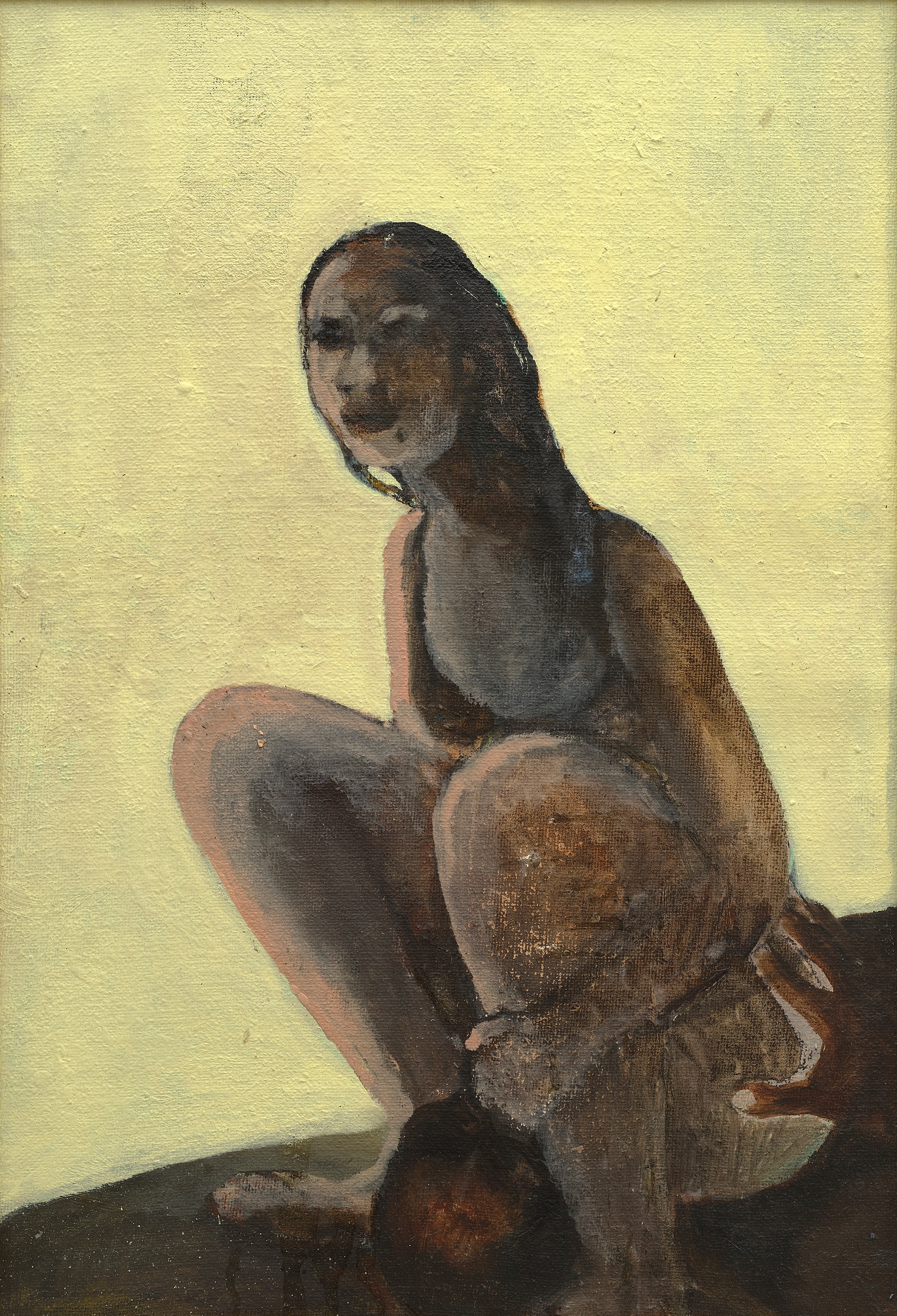
Absolutely. I love this topic, thinking of photography as a selfie versus painting akin to looking in the mirror. This is getting personal but in my own journey with body and trauma – I have a lot of scars on my body, and my body has been through a lot, it was impossible for me to look at myself in the mirror. I don't think anyone's ever fallen apart taking a selfie and so when you analogize it with taking a selfie versus looking in the mirror, it really resonates because I think that's the vitality of a painting; it has the potential to elicit that kind of response that we get when we really look at ourselves in the mirror, and not just to get the job done, but to investigate and try to understand. And I think that painting, in a way, is that portal to really looking at something or someone or ourselves.
There is, as you rightly point out, this split. When a painting is purely hedonistic, when it only tries to arrange agreeable colours on a canvas, it cannot be shocking. The great mistake of these people, the ones who keep their painting in the realm of decoration, is that their paintings remain on canvas. Real paintings exist in the consciousness of the viewer.
This idea of dysmorphia between what you are and what you see when you look in the mirror is also interesting within this context. I'm interested in this idea of dysmorphia and fluidity in the sense that I feel a lot of your characters, parts of their bodies and faces are rendered very loosely and very fluidly, while other areas are not rendered necessarily in a photorealistic way, but convey a very strong idea. In one figure you'll have eyes that are penetrating and super intense, but then the bridge of the nose is not articulated at all. I'm interested in this idea of how that might relate to some of these topics of fluidity, dysmorphia, and disassociation.
The figures in my paintings frequently have a supernatural character. Ghosts, angels, fauns and other mythic creatures often populate them. In 2015, I made a painting of a young man with two upper bodies and no legs. This was inspired by Caravaggio's Narcissus, as I always saw the figure in the painting to consist of the torso and its reflection, like the figure ‘8’. For me it was a crucial moment when I realized that dysmorphia is the spirit translating your body, your vessel, into a possibly very dark and twisted version of yourself.
We are never able to witness how we look from any other point of view than our own and that is the reason why we obsess so much about it. It’s like living in a mysterious castle. It might turn your body into a living corpse.
When I assemble the body the wrong way, a ridiculous way, like a puzzle, I am meditating on this inner life. They say to be fortunate is to be aligned with nature, but sadly, not everyone is a winner here. Also, the body is a place where communication becomes very concrete, even more than in the face. It dictates everything: how you move through the space, where you stand, the rhythm of your steps, your posture. A body tells a story much more than a face could ever do. Scars remind us of where we’ve been. I hope that my paintings reveal this struggle to open up to experience. I feel that my images are not so much created but released from deep degrees of the imagination, like deep-sea creatures.
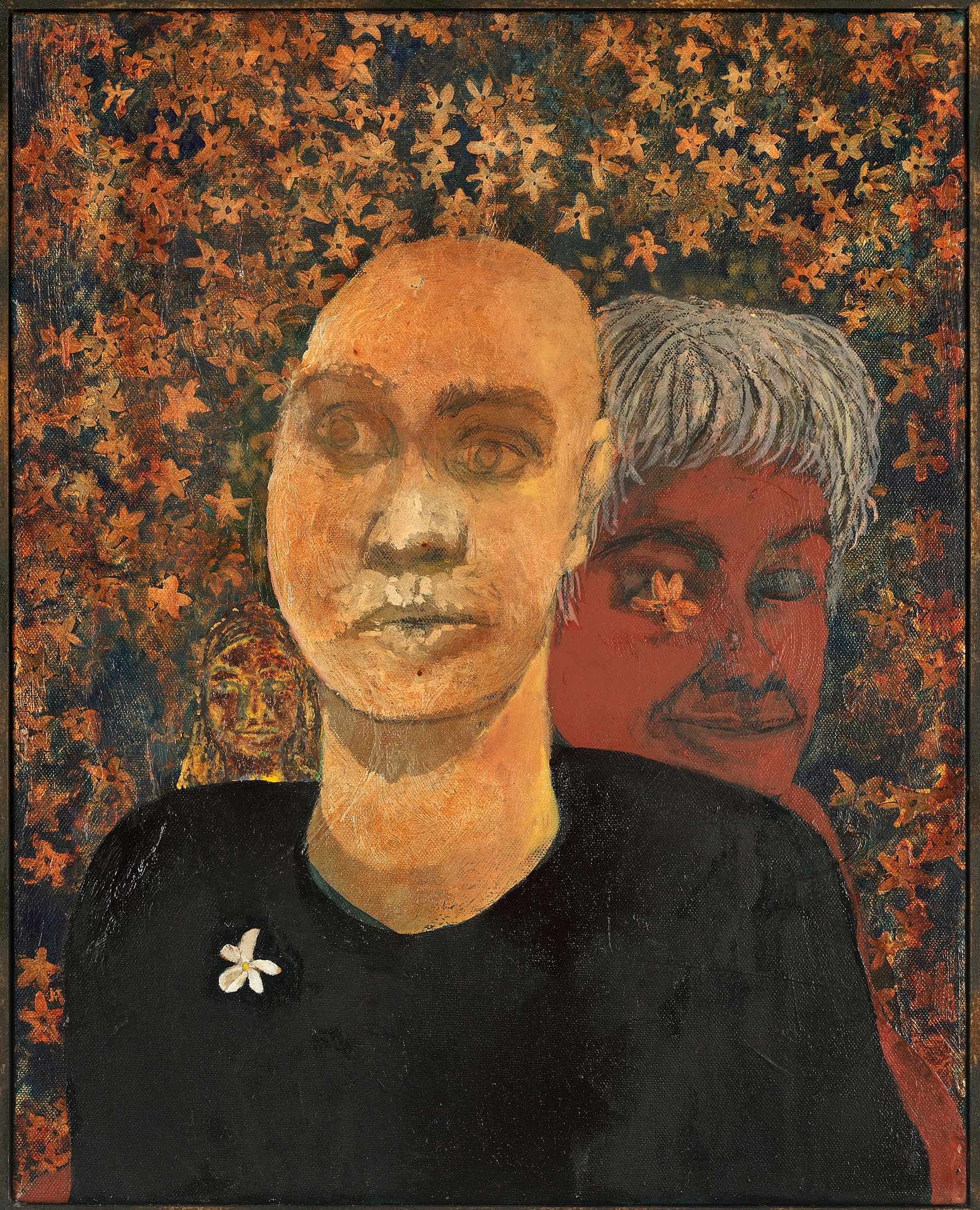
As I mentioned earlier, I started doing portraits of people and animals with live models. I thought that was a way to avoid getting lost in my fantasies and it's definitely playing a big part in my current practice. The main reason for deciding to do these portraits is because I noticed that people around me were appearing in my paintings without my intention. And I just thought, wow, if I can do that, how far can I take it consciously? To me it feels like the models are being reflected inside of me... I almost feel like a dark underwater cave. I want to see where that gets me - so I decided to ‘catch them’ on purpose.
And when you say you're trying to catch somebody, when you're using a live model what about them are you trying to reflect?
Usually the personal narrative is attached to specific memories that I want to last longer than they can. Painting gives me a way to resist palliating and at the same time retain my most beautiful perceptions. It lets me draw a trajectory created by the inner life of my models. I sometimes think of my practice as the Hospital of Transfigurations. And I am the surgeon.
A hospital is of course a place of healing…
Yes, but it is also the place where we die.
Is part of the challenge then letting go?
It's natural to first learn your language and communicate to be listened to and only then become specific. Subsequently the next rule you will set up as an artist is to let go, because you can get sucked in by your paintings...or by the persona you create in order to make the work outstanding and different. If you are a wanderer and wonderer, you have to know there will always come a time to leave. I could do many paintings of you today. Probably, some of them would turn out interesting. But there would be an unspoken question in them, so my quest is rather: what's the residue of my trials? What is the emotional residue of the work that needs to get done?
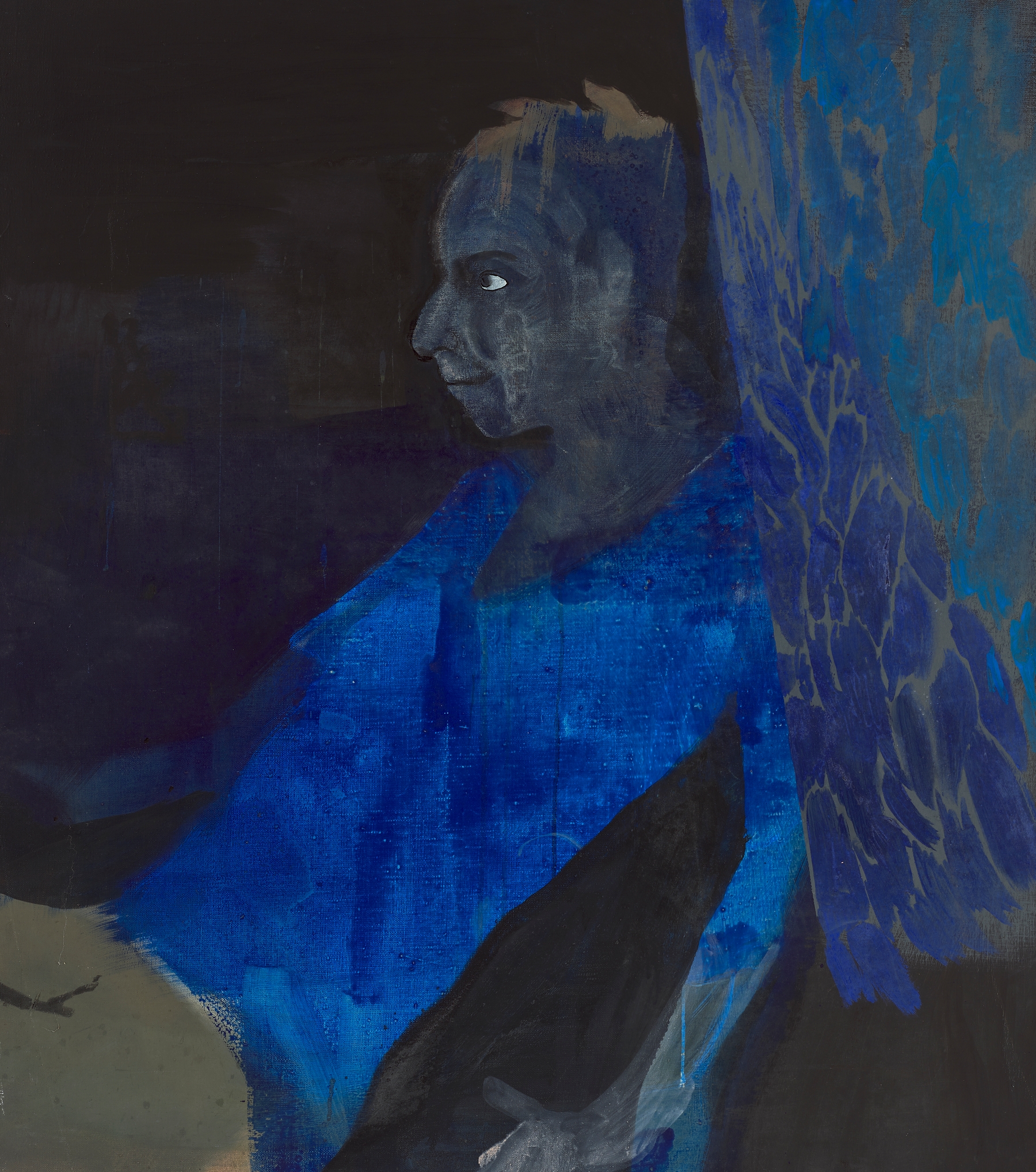
Maybe paintings can be thought of as containers for emotional residue. You mentioned Titian, when I was 11 or 12, there was a Titian exhibition at the Art Institute of Chicago and my mom took me to see it. I come from a pretty bourgeois family, so culture was always partly this privilege, but also sort of a chore to keep up appearances. It was something that none of us really wanted to do, including my mom, but I think she felt a certain obligation towards it. I remember boredly walking into the gallery and then standing in front of a painting and then crying. I was a kid, I couldn't understand what was happening to me and was completely overwhelmed. Something had grabbed me and made me look… and I mean really look. And in doing that, I was alone with myself and that painting for long enough to face a little bit of pain. Now I think about the thousands of people who probably stood in front of a painting like that and cried or emoted, do these paintings become containers or vessels for that emotional energy? So not even just the painter or the sitter, but the object itself which has been charged with energy over time. And if you, coming from certain spiritual practices, believe in the power of objects to carry emotional or spiritual power, that's an incredible amount of power accrued over time.
I think with good paintings you kind of become aware and you stop seeing the image and you just start feeling the presence. With Titian, and many of my favorite painters, when you go into their shows, you don't need to focus, but still you start seeing something resembling yourself. A very murky silhouette, but you sense there is someone real out there. And that's where, I think, painting can be this very potent weapon. These days, when identity politics and representational art have reached a zenith, figurative painting still exists in its own realm. Through this painting you can become sad, joyful, loving, you can learn. Anything human can be felt through painting, which means that there is no limit to the creation—it’s infinite.



